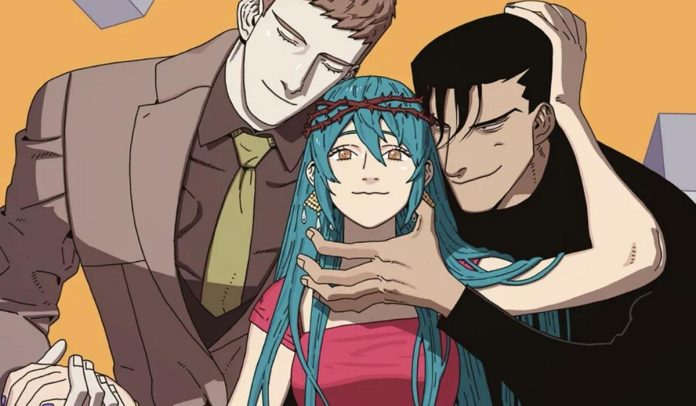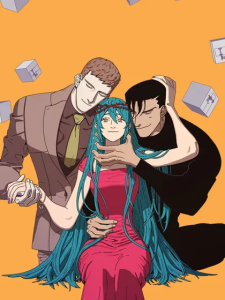 Guardians of the Lamb
Guardians of the Lamb
Writer/Artist: JUNS
Platform: Lezhin
Publication Date: September 7, 2020
Rating: Adult
Genre: Romance, Thriller, Drama, Psychological, Religious Conspiracy
Yang Hari is an up-and-coming actress on the verge of her first big break. Then she gets kidnapped. What could these thugs want from an ordinary woman like her? An ordinary woman with amnesia, whose every need has been provided for by a mysterious wealthy man named Mr. Anh? An ordinary woman shadowed by a reckless bodyguard named Gale?
Well, perhaps Yang Hari isn’t so ordinary after all. As a powerful religious cult wages a war of succession, three damaged souls are sucked into a vortex of violence, trauma, and guilt.
Guardians of the Lamb is a comic driven by pure id. That’s not to say that it’s mindless. The artist JUNS weaves a tale out of contemporary issues: South Korea’s history of religious cults, cycles of familial abuse, the 2014 sinking of the ferry MV Sewol. But that’s not why you’re here, reader. You’re here to watch extraordinarily beautiful and violent people fall in and out of love (and danger) as the world around them explodes into fire and blood.

Gale force
Three characters drive Guardians of the Lamb. First is Hari, the heroine of the story. Second is her guardian Mr. Anh, who is like if Mark Zuckerberg had actual charisma and was also your dad. Then there’s Gale, who embodies everything that is amazing and abrasive about the series. Gale is a killing machine capable of slaughtering a dozen skilled mercenaries in ten minutes without breaking a sweat. Even worse, he looks very smug while he does it.
Gale previously appeared in JUNS’ earlier Boys Love title Dark Heaven. JUNS draws him as an outrageous cartoon: huge broad shoulders, tiny waist, floppy black hair and a perpetual sly grin on his face. Gale is appointed as Hari’s protector and yet spends much of the series treating her as his prey. It’s a fantasy that I know appeals to a lot of folks, who are drawn to the confrontational bad boy archetype. Others will likely be repulsed by Gale’s edgelord behavior and lack of care for Hari’s boundaries.
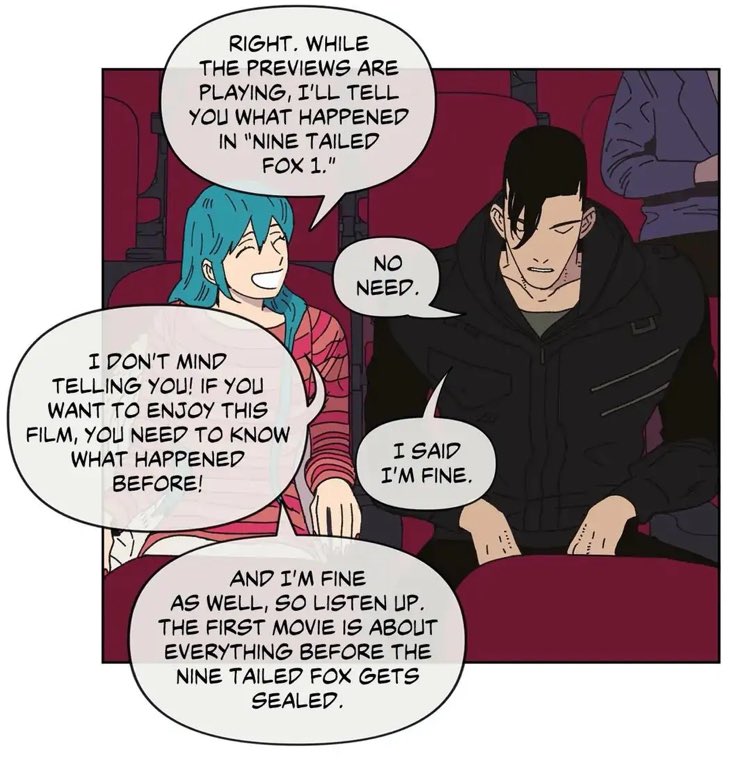
And I’m fine as well, so listen up
The key ingredient for me is Hari herself. She’s never just a romantic lead for the reader to project themselves onto. Instead, she’s a hyperactive trivia hound who is both naive and deeply generous. Hari has her own sexual wants, her own opinions, and can be exceptionally brilliant or stupid depending on the situation. Also, she farts.
Hari would be a distinct character even without her missing past. That past, of course, just makes her even more complicated.
Guardians of the Lamb, you see, is not about a love triangle between an ordinary girl, a saintly guy, and a monster. It is about a love triangle where everybody is a monster. Gale, Hari, and Mr. Ahn are all driven by childhood trauma to act out violently. Yet their respective manias become a bond of trust when they realize the ways in which they are connected. I find it easier to root for this kind of relationship, where all the participants are helping each other with their problems, than a one-sided “I can fix them” romance.
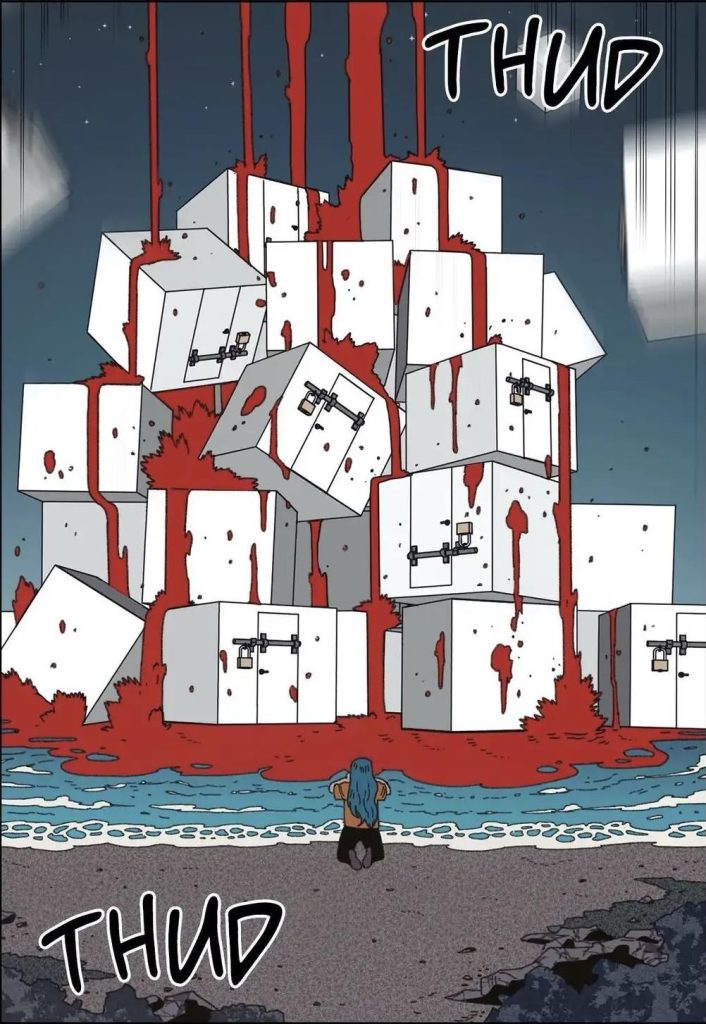
On the beach
JUNS has a knack for inventing spectacular visual metaphors. Hari’s memories, for instance, are depicted as an infinite space of crumbling lockboxes managed by tiny versions of herself. As she faces truths she has long avoided, the lockboxes burst with water or slowly stain red with blood.
Meanwhile, chocolate is made a symbol for Hari’s childhood willingness to accept rather than question the cruel logic of her upbringing. When we’re later given an image of child Hari munching on a giant chocolate pig in the midst of total ruin and chaos, it hurts that much more.
Guardians of the Lamb freely blends fiction and reality. Goat-like demons haunt past memories, while the voice of Gale’s monstrous father echoes from the throats of every person he kills. These flights of fancy might not function if the characters or their environments were too realistic. But JUNS’ exaggerated designs and worldview mesh seamlessly. I think you’d lose something if you made this story live-action rather than letting it be a cartoon.

What a cartoon!
The action is consistently stellar, too. Each sequence is hard-hitting, readable and effortlessly dynamic. Sure, the characters engage all the time in impossible physical feats. Considering how many times Gale jumps into action with guns blazing, he ought to be dead within the first 30 chapters. But since Guardians of the Lamb is a cartoon, it makes perfect sense that everybody in the story is stronger and more resilient than you’d find in real life.
Plus, it’s funny! JUNS is great at condensing their beautiful character designs into tiny “chibi” figures. Hari’s design in particular is repurposed as countless small and funny (or creepy) variants throughout the comic. Even when the characters are drawn at full scale, they engage in plenty of physical comedy that makes them look silly, embarrassing or even grotesque. You can never be sure when JUNS might punctuate a serious or sad moment with a joke, or vice-versa.
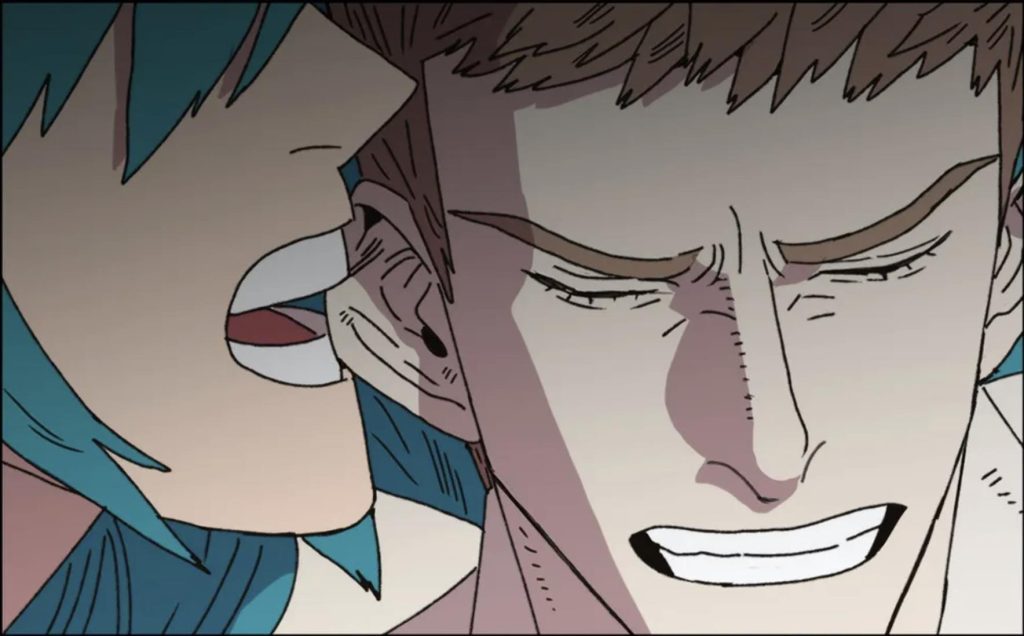
More than one
There are a fair number of shortcuts present here as well. The backgrounds are the typical 3D modeled cityscapes and forests you find in Korean webcomics. Some very important characters are left undeveloped, when their respective arcs should be at the heart of the story. Also, the series ends like a subway train ramming a concrete wall. Not a complete disaster, but you can see JUNS sweat as they struggle to wrap everything up.
I’m also torn over the way JUNS treats dissociative identity disorder, which has a long history of being used as a plot device. In recent years, folks who identify as DID, plural, or systems have come forward to share their stories. These stories are often more grounded than the exaggerated Hollywood version in Guardians of the Lamb. While I think JUNS’s portrayal has more going on than just typical cliche, I’d recommend anybody who wants the full story to do their own research.

Blessings on the world
Despite my reservations, I really like Guardians of the Lamb. It’s rare to find a long series like this with such a strong aesthetic identity. Some other Korean comics in this vein can look fairly indistinguishable from each other in terms of boarding and character design. But you’d never mistake a JUNS panel for anybody else’s. I’ll be thinking about some of the scenes from this series for a long time.

